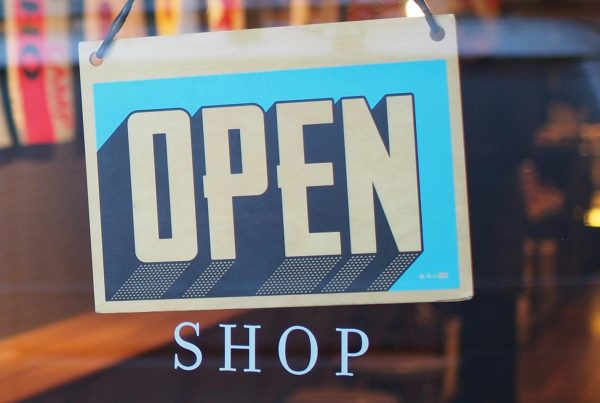Learn the basics of retail inventory management and how it helps your business manage stock levels.
Let’s talk about retail inventory management. Whether you thrive on ticking off boxes and creating lists, or if organizing sends shivers down your spine, we can all agree on one thing: keeping your inventory in check is crucial for a successful retail operation.
Here at Stone POS, we’re all about streamlining your inventory woes. Our retail POS system is equipped with top-notch organizational tools designed to make your inventory work for you. We’re here to share some hassle-free insider tips to help you whip your inventory into shape!
In this guide, we’ll cover:
- What exactly is inventory management?
- Why it’s an absolute must for your retail business
- Must-know inventory management processes and techniques
- Handy tips for setting up a POS inventory management system
Ready to take charge of your inventory like a boss? Let’s get started.
Definition of retail inventory management
Retail inventory management involves predicting how much stock of different items needs to be kept for sale or storage across different sales channels. This process uses software to estimate demand and assess the value of goods in inventory, which is important for accounting and auditing tasks.
Types of inventory management for retail
In retail, inventory isn’t one-size-fits-all. There are lots of different types that businesses need to manage efficiently. This includes:
- Raw materials: These are the basic materials used in production. If your business is involved in manufacturing, you’ll likely have raw materials on hand. For example, this could be lumber for construction businesses or fabric for clothing production.
- Work in progress: These are items in the process of being transformed into finished goods. If your business manufactures products, you may have goods at various stages of completion. You need to be sure you minimize the time items spend in this stage to maintain efficiency.
- Finished goods: This is the inventory ready for sale to customers, whether in-store or online. It includes products you’ve manufactured yourself or products that you’ve purchased from suppliers.
- Maintenance and repair items: These are the tools, parts, and labor needed to service the products you sell. For example, a bike retailer may need inventory for repairing and upgrading bicycles. While not products for sale themselves, these items are still really important for providing after-sales service and customer support.
Importance of inventory management for your store
Now that you’ve got a decent understanding of what inventory management for retail is, let’s look at why it’s important for you as a retail business owner:
Leverage customer relationship management through enhanced in-store experiences
Managing your inventory well can actually help you get to know your customers better. When you have the right items in stock at the right times, it makes your customers happy and keeps them coming back. This kind of personalized service makes shopping with you a great experience. It builds your reputation as a reliable business that customers love to visit.
Improve your store’s financial performance by investing the right amount of cash flow into your stock levels
Keeping just the right amount of products in stock is like finding the perfect balance. It means you’re not spending too much money on excess inventory or losing sales because you don’t have enough. This smart approach helps your money flow smoothly and keeps your store financially healthy.
Eliminate shrinkage and save up on operational costs
Nobody likes losing money, right? Good inventory management helps you spot any losses due to theft, damage, or waste. By keeping a close eye on your inventory, you can prevent these losses and save money by running your store efficiently.
Speeds up your operational efficiency with clear stocking categorization
Organizing your inventory well can make everything run faster and smoother. When everything has its place and is easy to find, your team can work more efficiently. This means less time searching for things and more time serving your customers, making your store a well-oiled machine.
Steps of the inventory management process in retail
Let’s now get on to how inventory management actually works in retail. In this section, we’ll break it down into steps, but don’t worry, it’s not as complicated as it sounds. Think of it as a simple guide to keeping your shelves stocked and your customers happy!
Centralize all of your product records
The first step in managing your inventory is to gather up all the info about your products and put it in one place. This means getting details like product names, descriptions, prices, and how much of each item you’ve got hanging out in your stockroom. Having this central hub of information makes it simple to keep tabs on what you’ve got and what you might need more of.
You can use a POS system or a retail inventory management system here to automate this task for you. They’ll update product information, track sales, and generate reports for you, saving you time and ensuring accuracy in your inventory records.
Identify stock location
Next you need to pinpoint where exactly each item in your inventory lives. This means assigning specific locations, shelves, or inventory storage for different products. By doing this, you create a map of your stockroom or store, helping you find items when you need them.
Frequent stock counts for better accuracy
Regularly counting your stock is like double-checking your to-do list to make sure nothing’s forgotten. It’s an important step in keeping your inventory records accurate, making sure you don’t run into any nasty surprises like running out of products or having too much sitting around. By doing these checks often, you catch any discrepancies early, which saves time and money in the long run. It’s all about staying on top of things and making sure your business runs smoothly.
Merge sales and inventory data to prioritize goods and customer demand
Sales data is all about what you’ve sold, like how many items, for how much, and how much revenue you generated from this. On the other hand, inventory data gives you stats on the stock of goods or materials you have on hand at any given time.
Now, when you merge sales and inventory data, you’re essentially combining these two sets of information. This allows you to see not just what’s been sold but also what’s left in stock. The result? You gain valuable insights into product performance and customer demand.
Establish a strong purchasing process with automated tools
Next up, let’s talk about using automated tools to make purchasing easier. These tools act like smart assistants, handling tasks like checking inventory levels, reminding you to place orders when things run low, and keeping everything organized. They save you time and prevent mistakes, making sure you always have what you need without overstocking. Plus, they give you insights into your buying habits, helping you make better decisions for your business. It’s like having a reliable helper for your purchasing needs!
Create a method for discounted items
Creating a system for discounted items is like setting up a clear roadmap for sales promotions. You start by deciding which products or customer groups qualify for discounts. Then, you figure out how much of a discount to offer—whether it’s a fixed amount or a percentage off. It’s also important to set a timeframe for the discount, like a weekend sale or a month-long promotion.
Once everything’s set, make sure your team knows the deal so they can apply the discounts correctly at checkout. And don’t forget to let your customers know! You can use signs, emails, or social media to spread the word about your awesome deals.
After the discounts have been running for a while, take a look at how they’re doing. Are they bringing in more customers? Are sales going up? Use this feedback to tweak your discounting strategy and keep things fresh.
Generate a stock-receiving process
Creating a good stock-receiving process is super important for keeping track of your inventory and making sure everything runs smoothly. Start by setting up a special area just for getting new shipments. Make sure it’s organized and has all the tools you need to check items for any damage or mistakes. Train your team on how to do this properly so they know exactly what to do. Use technology like barcodes to make recording items easier and more accurate. Keep reviewing and improving your process based on feedback and how well it’s working. This way, you’ll have a solid system for handling your inventory and avoiding any mix-ups.
Build an efficient system for returns
Creating an efficient returns system is key to keeping customers happy and operations smooth. Start by setting clear rules for returns, like when and why they’re accepted. Let customers know these rules through your website or signs in your store. Have a designated area for processing returns and train your staff on how to handle them properly. Use technology like barcode scanners to make the process faster and more accurate.
Keep updating and improving your system based on feedback to make sure it stays efficient and customer-friendly. With a good returns system, you’ll keep customers satisfied and running smoothly.
Set a dead stock procedure to become cost-effective
Dealing with dead stock helps save money. How? By freeing up space, reducing costs, and preventing old items from taking up valuable shelf space. To do this, you need to start by identifying items that aren’t selling well or are close to expiring. Inventory management software can help with this. But your knowledge as a successful retail business owner comes in handy too.
Once you’ve got a decent idea of your losing products (or your dead stock) offer them to your customers for a discounted offer. It’s the same thing supermarkets do when they have food that’s about to go off and it works a treat, trust us. If they still don’t sell, think about marking them down further or donating them to a charity of your choice. After all, if you can’t use them, it might be better to get them out of your way, and they can still do some good, right?
Set clear inventory management KPIs for your store
How do you know if your retail inventory management practices are working? Are you on track or are you finding there’s still room for improvement? You can figure all of this out by setting clear KPIs (this is just a fancy word for targets or goals btw) to help.
Think about what matters most to your retail store. Maybe it’s how quickly items are selling or how often you’re restocking shelves. Then set specific targets for these metrics. Once you know what you’re working to, you’ll stay focused, improve efficiency, and keep your inventory management practices effective.
Inventory audit techniques in retail
Physical inventory count
Think of physical inventory counts like taking a big snapshot of your entire inventory. It’s like doing a thorough check to make sure everything you think you have matches up with what’s actually there. This inventory management process usually involves counting every single item in your inventory, from the big stuff to the small stuff. For example, imagine you own a flower shop and don’t have a flower shop POS. Doing a physical inventory count means someone goes through every shelf, every aisle, and counts each stem one by one. It’s time-consuming, but it gives you the most accurate picture of what’s in your store.
Inventory reconciliation
Inventory reconciliation is when you compare your recorded inventory levels with the actual counts to see if there are any discrepancies. The reason you want to do this is to pinpoint any errors in recording or tracking inventory, ensuring that your records align with the physical inventory on hand. It’s an essential step in maintaining accurate inventory data and avoiding stock outs or overstock situations.
Cycle count analysis
Cycle counts are like mini inventory checks that you do more often. Instead of counting everything at once, you break it down into smaller, manageable chunks and count a portion of your inventory regularly. Suppose you run a bakery and need to manage inventory by keeping track of ingredients and products. For example, every Monday, you count your flour to ensure you have enough for the week. On Wednesdays, it’s sugar for your sweet treats, and Fridays are for eggs, crucial for weekend baking. Finally, on Saturdays before closing, you count everything ready for sale. You can carry out cycle counts easily using bakery software via your POS system.
Most common ordering methods in inventory control to match demand
Economic Order Quantity (EOQ)
Economic order quantity (EOQ) is like finding the sweet spot for how much product you should buy to meet demand without overspending. It’s all about minimizing inventory costs—like holding onto items too long, running out, or spending too much on orders.
You calculate EOQ using the formula: EOQ = √((2 D S) / H), where:
- D represents the annual demand for the product
- S represents the ordering cost per order
- H represents the holding cost per unit per year
Looks a bit complicated, doesn’t it? Let’s break it down: for example, let’s say you run an electronic gadgets store. Now if the store’s annual demand for a particular smartphone model is 1,000 units.
The ordering cost per order (S) is $50, and the holding cost per unit per year (H) is $10 then using the EOQ formula we can calculate the optimal order quantity as follows:
EOQ = √((2 1,000 $50) / $10) EOQ = √((100,000) / $10) EOQ = √10,000 EOQ = 100 units.
This means that the store should order 100 units of the smartphone model at a time to minimize total inventory costs
Open to buy (OTB)
Just as you budget for groceries, vacations or clothes, OTB helps retailers plan their purchases and manage inventory levels effectively.
Here’s how it works: You figure out how much money you can spend on new merchandise within a certain period (this could be a week, month, year or season, it really doesn’t matter as long as you consider things like expected sales, current stock levels, and trends in your industry.) This then gives you a plan for your purchasing decisions.
Let’s say you own a small boutique. With OTB, you can decide how much to spend on different items, like dresses, accessories, or shoes for the summer season. It helps you make smart choices about what to stock up on and when to do it, so you’re always ready for your customers’ needs. Plus, by keeping an eye on your OTB and adjusting as needed, you can stay flexible and adapt to changes in the market.
Just in time (JIT)
Have you ever pre-ordered a takeout pizza because you know that it’ll arrive fresh and piping hot right when you start to get hungry? Just-in-time (JIT) stock management is a similar concept but applied to your store’s inventory.
With JIT, you time your orders to arrive just when they are needed, minimizing the need for excess inventory and reducing storage costs. So, if you run a coffee shop for example, instead of storing lots of coffee beans, you order exactly what you need until your next delivery. This keeps your inventory lean, cuts down on storage costs, and lets you respond quickly to customer demands.
Safety stock
Safety stock is like having a backup plan for your inventory. It’s that extra amount of product you keep on hand to cover unexpected fluctuations in demand or delays in supply. Think of it as a cushion that helps you avoid stockouts and keep your customers happy.
Calculating safety stock involves considering factors like lead time variability, demand variability, and service level targets. The goal is to strike a balance between having enough safety stock to handle fluctuations and minimizing excess inventory costs.
For example, let’s say you run an online clothing store. During the holiday season, demand for sweaters might spike unpredictably. By maintaining a safety stock of sweaters, you can ensure that you’re prepared for sudden surges in orders without risking stockouts. This extra inventory acts as a buffer, giving you peace of mind and maintaining a high level of customer satisfaction.



